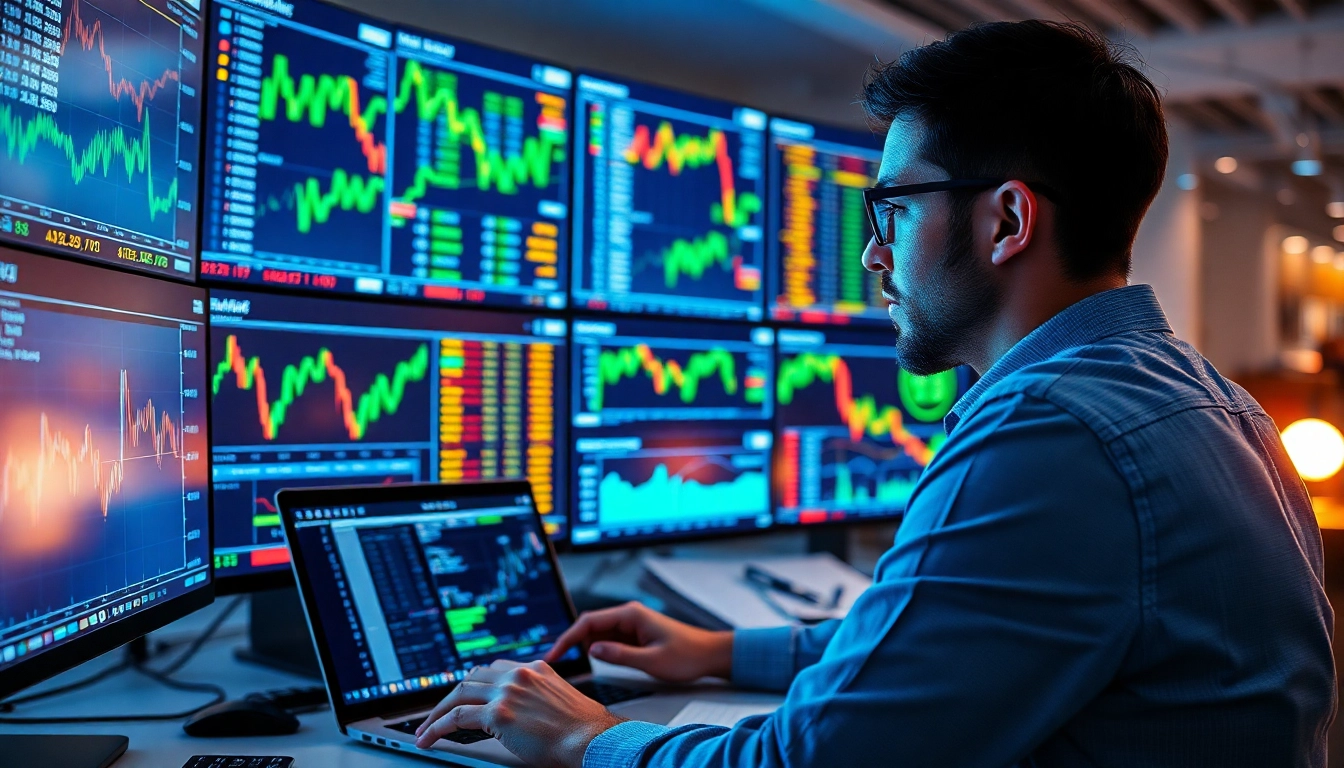Understanding Forex Trading Basics
Forex trading, or foreign exchange trading, is the global marketplace for buying and selling currencies. It is a decentralized market and operates 24 hours a day, five days a week, offering substantial liquidity and the potential for gaining significant profits. As one of the largest financial markets in the world, with an average daily trading volume exceeding $6 trillion, it attracts a diverse range of participants, including banks, corporations, institutional investors, and individual retail traders. To delve deeper into forex trading, it’s essential to understand its foundational concepts and mechanics.
What is Forex Trading?
Forex trading involves the exchange of one currency for another, which is typically conducted through pairs. For instance, when traders want to exchange Euros (EUR) for U.S. Dollars (USD), they are participating in forex trading. The primary goal is to profit from the changes in currency values over time. The market determines exchange rates based on various factors, including economic indicators, geopolitical events, and market sentiment.
The Currency Pairs Explained
Currencies are traded in pairs, meaning you simultaneously buy one currency while selling another. Currency pairs are divided into major, minor, and exotic pairs:
- Major Pairs: These include the most traded currencies and typically involve the USD, such as EUR/USD, USD/JPY, and GBP/USD.
- Minor Pairs: This category includes currencies that are less traded and do not involve USD, like EUR/GBP and AUD/NZD.
- Exotic Pairs: These pairs are formed with a major currency paired with a currency from a developing economy, such as USD/TRY (Turkish Lira) or EUR/SEK (Swedish Krona).
How Forex Trading Works
Forex trading occurs over-the-counter (OTC), meaning currency transactions are conducted electronically via computer networks rather than through centralized exchanges. Orders can be placed through online brokers or trading platforms. Forex prices are affected by various factors, including interest rates, inflation rates, political stability, and economic performance. Traders analyze these factors using various tools and techniques to make informed decisions.
Key Strategies for Successful Forex Trading
Technical Analysis and Charting Techniques
Technical analysis involves analyzing price charts and historical market data to predict future price movements. Traders use technical indicators, patterns, and chart trends as they identify potential entry and exit points. Common technical indicators include:
- Moving Averages: Helps in smoothing out price data to identify trends over a specified period.
- Relative Strength Index (RSI): Indicates if a currency is overbought or oversold.
- Bollinger Bands: Used to measure market volatility and price levels.
Fundamental Analysis in Forex Trading
Fundamental analysis focuses on economic indicators and financial news that affect currency values. Key indicators include gross domestic product (GDP), employment rates, interest rates, and inflation. Traders must keep abreast of financial news releases and understand how they can impact currency valuations. For example, a higher-than-expected job growth report may lead to an appreciation in the USD against other currencies.
Risk Management Strategies
Managing risk is crucial in forex trading to safeguard against potential losses. Effective strategies include:
- Setting Stop-Loss Orders: Pre-determined price levels at which a trade will close to limit losses.
- Position Sizing: Adjusting the size of a trade according to account balance and risk tolerance.
- Diversification: Engaging in multiple currency pairs to reduce exposure to any single market.
Choosing the Right Forex Trading Platform
Features to Look for in a Trading Platform
A good trading platform is critical for successful forex trading. Essential features to consider include:
- User-Friendly Interface: An intuitive interface that allows traders to navigate the platform easily.
- Advanced Charting Tools: Comprehensive toolsets for analysis, including various timeframes and indicators.
- Execution Speed: Quick execution times to capitalize on market opportunities.
- Security Measures: Industry-standard security protocols to protect user data and funds.
Comparing Popular Forex Trading Platforms
There are several forex trading platforms available, each offering unique features. Some popular platforms include MetaTrader 4 (MT4), MetaTrader 5 (MT5), and cTrader. Each platform is equipped with various tools for both beginner and experienced traders, including demo accounts for practice without risking real money. Researching user reviews and performance metrics can help in making an informed choice.
User Reviews and Insights
User feedback is invaluable when selecting a trading platform. Prospective traders should consider factors like customer support responsiveness, withdrawal times, and overall user experience. Engaging with trading forums and communities can provide insights and recommendations from current users, maximizing the chances of choosing a platform that aligns with individual trading strategies.
Forex Trading for Beginners: Getting Started
Setting Up Your Trading Account
To begin trading forex, you first need to set up a trading account with an online broker. The process typically involves the following steps:
- Research Brokers: Compare different brokers based on fees, leverage, and available currency pairs.
- Fill Out Application: Provide personal information and select an account type that suits your trading needs.
- Deposit Funds: Fund your trading account through various methods, including bank transfers, credit cards, or e-wallets.
- Practice Trading: Use a demo account to get familiar with the platform without risking your capital.
Common Mistakes Made by New Traders
New traders often encounter a learning curve in forex trading. Some common mistakes to avoid include:
- Neglecting Risk Management: Failing to implement proper risk management can lead to significant losses.
- Overleveraging: Using excessive leverage can amplify losses beyond what a trader might expect.
- Ignoring Economic News: Disregarding market news can lead to missed opportunities or unforeseen losses.
Resources for New Forex Traders
New traders can benefit from a variety of resources, including online courses, trading webinars, and forex news sites. Educational platforms also offer simulation tools to practice trading strategies in real-time without making real financial commitments. Engaging with these resources can enhance understanding and boost confidence before transitioning into live trading.
Advanced Techniques for Experienced Forex Traders
Algorithmic and Automated Trading Strategies
Advanced traders often implement algorithmic trading, where specific algorithms and trading strategies execute trades automatically based on predefined criteria. These methods can reduce emotional decision-making and improve reaction speed to market changes. Traders can customize their strategies to adapt to market conditions and backtest them to determine effectiveness.
Market Analysis Tools for Professionals
Experienced traders utilize advanced analysis tools such as economic calendars, sentiment analysis platforms, and cutting-edge indicators to inform their trading decisions. These tools provide valuable insights into market behavior, allowing traders to forecast future price movements more accurately.
Performance Metrics for Evaluating Success
Measuring performance is vital for any trader looking to improve. Key metrics include:
- Win Rate: The percentage of profitable trades against total trades.
- Risk-Reward Ratio: The ratio of potential profit to potential loss in a trade.
- Drawdown: The measure of peak-to-trough loss during a specific period.
Continuously evaluating these metrics allows traders to fine-tune their strategies and improve their overall trading performance.



